
01 May 2023 Women’s Work — five surprising stories of women and HBI’s project sites
We were recently challenged to look at Historic Boston’s projects through a wider lens — to see what stories might surface about women and their role in each building’s history. We found interesting stories just waiting to be uncovered…
Julia Gorham Hayden Richardson and the Hayden Building
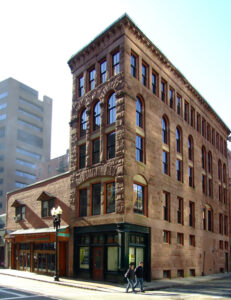
Without Julia Gorham Hayden Richardson (1837-1947), the Hayden Building (1875) might never have come to be, at least not in Boston. Saved by HBI in 1993 and rehabilitated for housing and retail in 2014, the small architectural gem was not identified as the work of eminent American architect HH Richardson until 1975 when a small free-hand rendering by Richardson was discovered in the archives of his successor firm of Shepley Rutan and Coolidge (today’s Shepley Bulfinch). Research by architectural historian Cynthia Zaitzevsky revealed that the building was designed for the estate of Dr. John Cole Hayden, the father of Julia Gorham Hayden, Richardson’s wife. Julia married Henry in 1867 and her father died in 1869. The building was erected in 1875 on the site of a massive explosion that had destroyed the previous buildings on the site. The new quintessentially Richardsonian building served as an investment property for Julia for nearly 60 years after H.H. Richardson’s passing in 1886. At her passing, it was sold to a new owner.
Carmela Vertullo Pierce and the Vertullo Building
When HBI purchased Hyde Park’s Vertullo Building in 2010, one of the conditions of the purchase was that Carmela (Vertullo) Pearce could continue to live there for as long she wanted. An almost life-long occupant of the 1868 building, Carmela and her family were present in this building for 87 years and represented an important phase of the historic building, which was built in 1868 — the same year Hyde Park became an independent town.
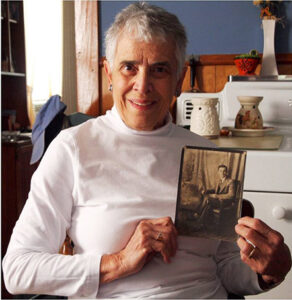

Carmela’s father, Pasquale Vertullo, purchased the building in 1932. An entrepreneurial and industrious immigrant from Italy, he ran a cobbler’s shop on the ground floor for many years while renting spaces to other commercial tenants, and he and his wife raised their son and two daughters “above the shop” in a large, rambling apartment. When HBI suggested naming it “The Vertullo Building” in honor of her father’s and her family’s long association with the structure and with the community, Carmela—a self-described “tough cookie”—initially demurred, accusing HBI’s Jeff Gonyeau of being “too sentimental.” However, she relented, and HBI knows that she was secretly proud of seeing her family memorialized in this way, and of helping to usher in a new era for this prominent historic structure in Hyde Park.
Carmela’s life revolved around her family and her neighborhood. She was a member of the local bowling league that played at Ron’s Ice Cream and Bowling Alley in Cleary Square and she was an active member of the Hyde Park Historical Society. Carmela passed away in 2019 at age 87, still a resident of the Vertullo building.
The Alvah Kittredge House/The Mehitable Kittredge Home
Mehitable Grozier Kittredge (1803-1883) met her husband Alvah Kittredge at a religious revival in Boston’s Park Street Church in 1823. It would be 10 years before the couple moved to Alvah’s newly built Greek Revival mansion in Roxbury (an HBI project in 2014) . Mehitable and Alvah were very devout “orthodox” church members, which meant they were members of what we know today as the Congregational Church.
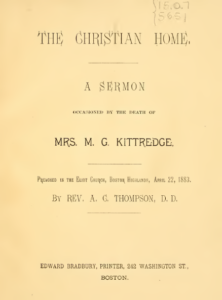 We know some details of this woman’s life from public records. Mehitable was the mother of six children, five of whom survived to adulthood, and 21 grandchildren. But we gain additional insight into her character from a remarkable sermon published in 1883 by the Eliot Congregational Church in Roxbury. Called “The Christian Home: A Sermon Occasioned by the Death of Mehitable Kittredge,” Rev. A.C. Thompson tells the story of a faithful woman and homemaker who, with her husband, was deeply involved in the establishment of a Congregational Church in Roxbury beginning in the 1830s, when one no longer existed there. Thompson tells us that Mehitable’s hospitality was boundless. Their home became the meeting place and worship center for organizing the faith community which that ultimately became Roxbury Congregational Church (now on Dale Street): “Not unfrequently theological students were guests…Often was the door opened to ministers and missionaries. My own first home here was under that roof, which served to make the morning of a pastoral life bright with beams that have not yet lost their cheer. “
We know some details of this woman’s life from public records. Mehitable was the mother of six children, five of whom survived to adulthood, and 21 grandchildren. But we gain additional insight into her character from a remarkable sermon published in 1883 by the Eliot Congregational Church in Roxbury. Called “The Christian Home: A Sermon Occasioned by the Death of Mehitable Kittredge,” Rev. A.C. Thompson tells the story of a faithful woman and homemaker who, with her husband, was deeply involved in the establishment of a Congregational Church in Roxbury beginning in the 1830s, when one no longer existed there. Thompson tells us that Mehitable’s hospitality was boundless. Their home became the meeting place and worship center for organizing the faith community which that ultimately became Roxbury Congregational Church (now on Dale Street): “Not unfrequently theological students were guests…Often was the door opened to ministers and missionaries. My own first home here was under that roof, which served to make the morning of a pastoral life bright with beams that have not yet lost their cheer. “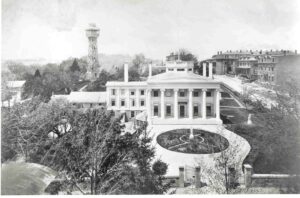
Not surprisingly, this pastor tells us she was a pious woman. “In one word you would have found ‘a church in the house,’ a Christian home, and well-ordered home, a cheerful, happy home,” wrote Thompson. “The home test is the chief test. If you had been guests, for any time, at the house on Highland Street, you would have been satisfied that He who bade John and Andrew “Come and see” was an inmate there.”
A nice, warm home for all the kitties and the doggies in the world: Anna Clapp Harris Smith and 65 Pleasant Street, Dorchester
When young Anna Harris was seven years old, she is said to have exclaimed, ‘When I’m grown-up… I’m going to turn my daddy’s big barn into a nice, warm home for all the kitties and the doggies in the world.’ Born in 1843, Anna lived her entire life in what we know today as the Anna Clapp Harris Smith House at 65 Pleasant Street in Dorchester, a building that was an HBI project in 2010. Built in 1801, the house sits on foundations that date to an earlier Clapp family house of the 1630s.

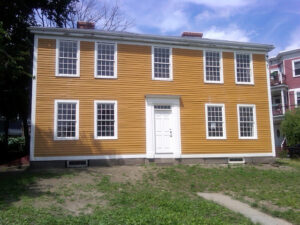
Anna inherited the house from her parents. She married publisher Huntington Smith in 1884. The couple was known for various philanthropic and welfare initiatives, but Anna is best known as the founder of the Animal Rescue League. She wrote to the Boston Evening Transcript in January of 1899, Anna vividly described acts of cruelty toward animals and the need for a centrally located shelter for the rescue and care of homeless cats and dogs. “While getting dogs and cats off the street is work worth doing,” she wrote, “the teaching of thoughtful kindness is the work that changes families, communities, and a nation.” Her appeal for support received over 60 enthusiastic responses, and on February 9, 1899, 110 people attended the first meeting of the newly formed Animal Rescue League of Boston.
She led the Animal Rescue League as president until her death in 1929. By 1915, she had helped to organize seven Animal Rescue Leagues in Massachusetts, and at least ten in other states, including Washington, D.C.
Annah Faxon Perry Osgood and the Roxbury Home for Aged Women
A little-known period in the 238-year history of the Spooner-Lambert House (1785) in Roxbury is of its place as the Ladies Unity Club of Roxbury’s Home for Aged Women, established there in 1902 by Annah Faxon Perry Osgood (1835-1911), a Roxbury native who was the organization’s founder and a life-long resident of Highland Park.
She and her husband Freeman David Osgood were members of the Unity Movement a faith movement that emphasized the potential good in everyone, and continues to exist today. It describes itself as having no particular creed, set dogma, or religious ritual, but holds that there is good in every approach to God and in every religion that fulfills someone’s needs.
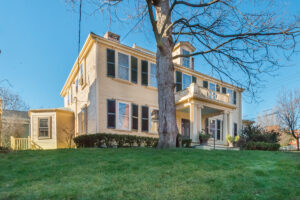 The Spooner Lambert House was built in 1785 by Major John Spooner, who led the Roxbury militia in the Revolutionary War. The Unity Club’s Home for Aged Women operated there into the 1950s. In 1993, the house was restored by HBI and converted to four apartments that were eventually sold as four condominiums to their respective occupants.
The Spooner Lambert House was built in 1785 by Major John Spooner, who led the Roxbury militia in the Revolutionary War. The Unity Club’s Home for Aged Women operated there into the 1950s. In 1993, the house was restored by HBI and converted to four apartments that were eventually sold as four condominiums to their respective occupants.




